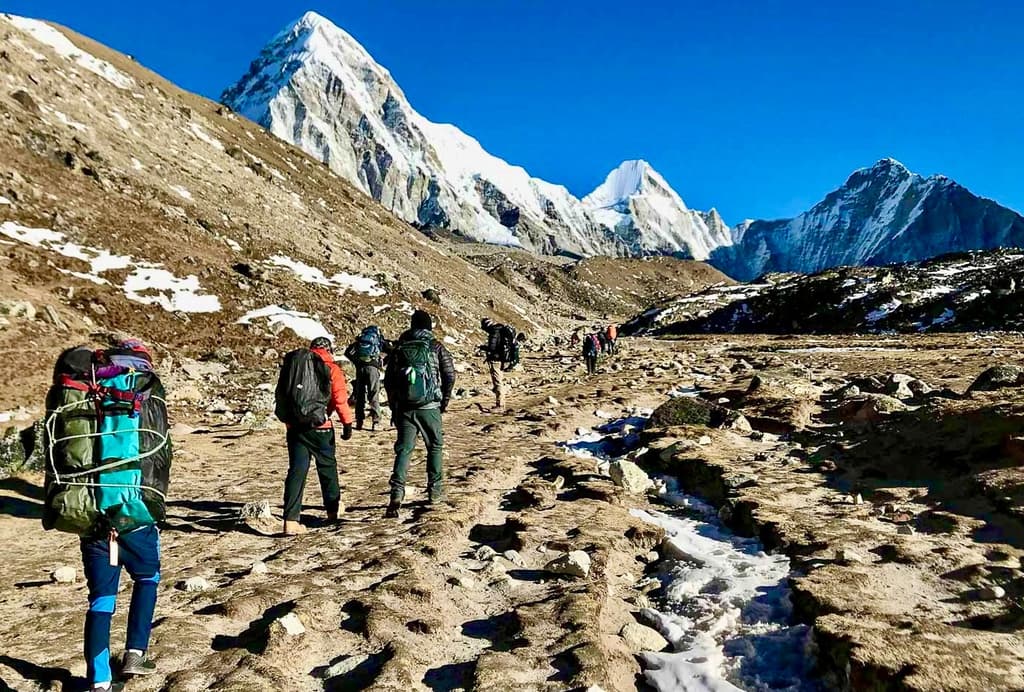Foods During Gokyo Valley Trek
Gokyo Valley Trek, situated in the heart of the Everest Region, stands as a beacon for global adventure enthusiasts. This iconic trekking path draws attention not just for its breathtaking landscapes, but also for its unique blend of rich Sherpa culture, diverse flora & fauna, and towering white peaks. The trail promises an invigorating experience, challenging both the mind and body, ultimately leading trekkers to a rewarding destination.
Trekking, by its nature, invites individuals to immerse themselves in high-altitude terrains and confront unpredictable extreme weather conditions. This journey pushes one's physical and psychological boundaries, demanding resilience and adaptability.
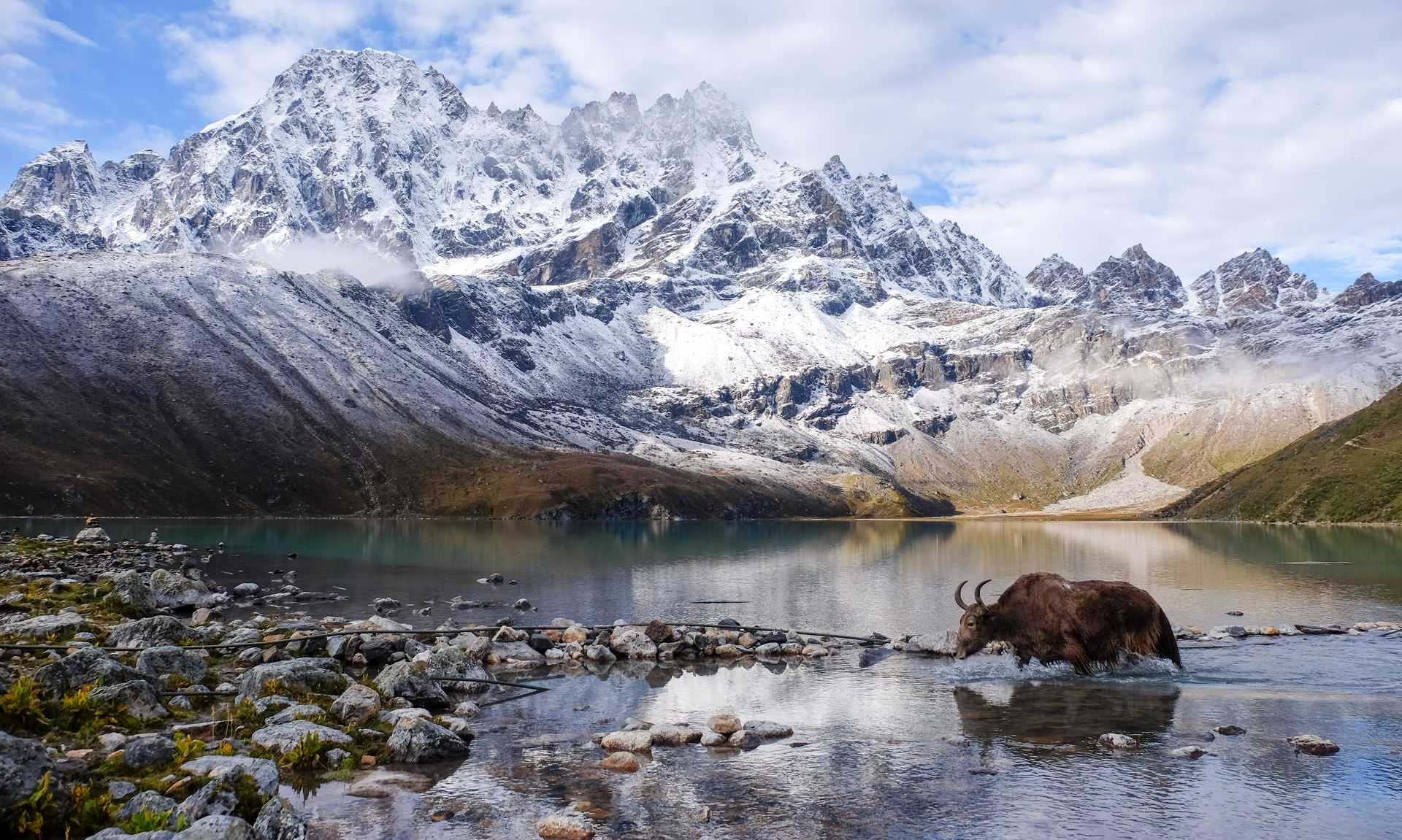
An integral part of this adaptation involves acquainting oneself with the mountainous region's food and accommodations. In the Everest Region, trekkers will primarily find hotels, guest houses, and teahouses that cater to their dietary needs. However, given the Gokyo Valley Trek's immense popularity, it's worth noting that these facilities might be less accessible due to the high influx of trekkers.
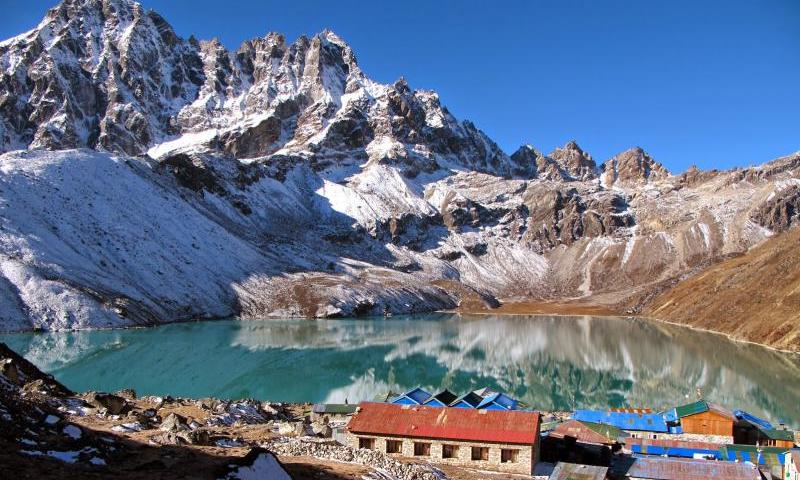
Understanding the culinary and cultural backdrop of the Everest Region is essential. The area is predominantly inhabited by the Sherpa community, staunch followers of Buddhism. Owing to their religious beliefs, slaughtering animals is forbidden. This means that most meat and eggs consumed in the Everest region are transported from urban centers like Kathmandu using helicopters and planes. The remoteness and reliance on air transportation significantly inflate food prices in the mountains, making them notably higher than in cities.
In essence, the Gokyo Valley Trek offers more than just picturesque views; it's a deep dive into the traditions, culinary practices, and challenges unique to the Everest Region.
Here, we are writing some vital information about the foods during your Gokyo Valley trek. The foods are mainly categorized into three different sections, such as Breakfast, Lunch, and Dinner.
What should I eat for breakfast?
After the adrenaline-pumping 35-minute flight from Kathmandu, your first hearty breakfast awaits you in Lukla village, the gateway to the Everest Region, and the start of the Gokyo Valley Trek.
Undoubtedly, breakfast is the cornerstone of any trekker's diet. Serving as the initial boost, a well-balanced breakfast prepares and energizes your body for the day's trek ahead. On a teahouse trek, you'll find that breakfast time typically falls between 7-8 am, aligning with the rhythm of the mountains and ensuring trekkers set out with the sun.
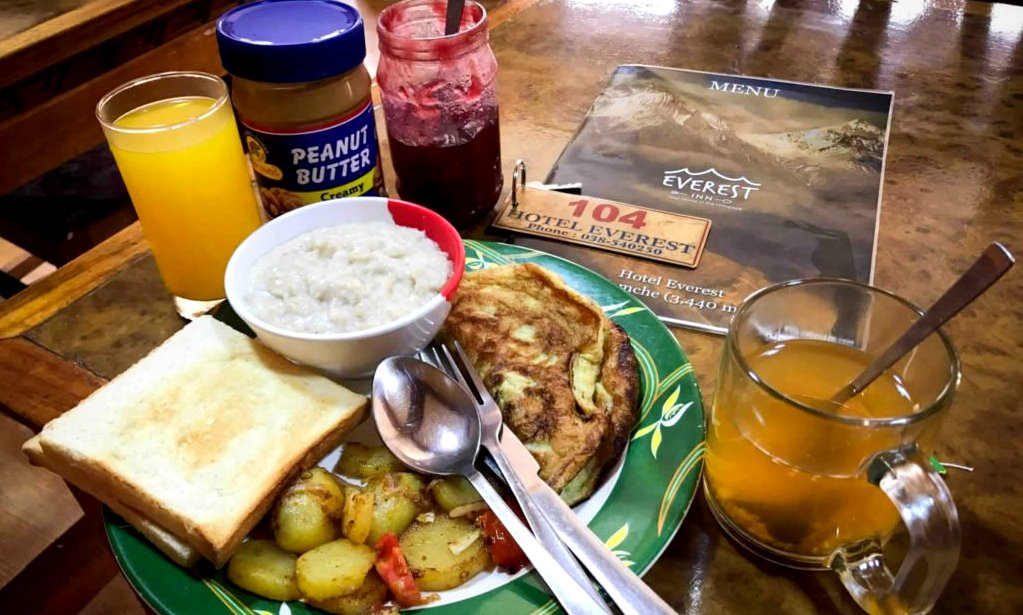
So, what's on the menu in these teahouses and guesthouses?
- Toast Items: Crispy, golden slices of bread, perfect with butter, jam, or honey.
- Egg Items: Whether you prefer them scrambled, fried, or as an omelet, eggs are a protein-rich choice.
- Local Potatoes: A nod to the local produce, these are often prepared as savory hash browns or spiced wedges.
- Porridge: A warm, comforting staple made from grains, serving as a dense source of energy.
- Muesli: A cold mix of oats, nuts, fruits, and milk or yogurt, providing a balance of protein and carbohydrates.
- Bread Items: This can range from local Tibetan Bread to more familiar bread rolls or pancakes.
- Tea/Coffee: Your dose of caffeine or the warmth of tea, available in various types, from black tea to milk tea.
Each of these foods is meticulously prepared, ensuring hygiene and health. They are packed with essential nutrients, ensuring a sustained release of energy. Notably, many of these items have a higher glucose content. Maintaining an elevated glucose level in your bloodstream is paramount during treks, as it translates to sustained energy throughout your journey.
In summary, your breakfast in Lukla village isn't just a meal; it's the initial push, the energy source, and a delightful introduction to local culinary traditions. Choose according to your palate and body's needs, and you're set for the day!
What should I eat for lunch?
During trekking, lunch holds a pivotal role in a trekker's diet, serving as a much-needed energy reservoir for the day's activities. Rich in carbohydrates and grains, the lunch spread offers sustenance that propels trekkers forward amidst the rugged terrains and panoramic vistas of the Gokyo Valley. Depending on the trekking pace and available rest spots, lunchtime usually spans from 12 pm to 1 pm.
One of the unparalleled joys of the Gokyo Valley Trek is the privilege of dining against the backdrop of awe-inspiring mountain ranges. Every stop for lunch unfolds scenic beauty, from cascading waterfalls, and verdant valleys to, of course, the majestic peaks themselves.
At the heart of the lunch menu in the Everest region lies Dal Bhat Set, a quintessential Nepalese delicacy. This complete meal comprises:
- Boiled Rice: The primary source of carbohydrates.
- Lentil Soup: A rich protein source.
- Vegetables: Offering essential minerals and vitamins.
- Pickle: Adding zest and flavor.
- Spinach: Providing iron and other nutrients.
- Meat item: Available upon request, for those seeking additional protein.
However, the culinary diversity doesn't end there. Trekkers have a plethora of options to satisfy their hunger:
- Noodles: Quick and easy, these can be served stir-fried or in a soup.
- Dumplings (Momo): Nepalese-style dumplings filled with either vegetable, chicken, or buffalo meat.
- Pasta and Macaroni: Often served with a variety of sauces and toppings.
- Pizza: With a local twist, available in various toppings.
- Sandwich: Primarily vegetable-filled, but options vary depending on the teahouse.
- Spaghetti: A beloved Italian dish with a Himalayan touch.
- Thukpa Soup: A noodle soup enriched with meat or vegetables.
Most dishes are versatile, allowing trekkers to customize based on dietary preferences. Whether it's adding cheese, vegetables, eggs, or other toppings, there's room for personalization. However, it's vital to note that as you ascend in altitude, the menu offerings may dwindle, reflecting the logistical challenges of supplying remote teahouses.
Lunch on the Gokyo Valley Trek is not just about sustenance; it's a delightful culinary experience that complements the breathtaking surroundings, ensuring that both the body and soul are well-fed.
What should I eat for dinner?
As twilight descends upon the snowy peaks of the Himalayas, dinner preparations get underway in the various teahouses dotting the Gokyo Valley trek. And what an intimate affair it is! Trekkers gather around a robust locally-made mountain heater, the heart of the teahouse, where tales of the day's adventure are exchanged amidst the comforting warmth. This gathering, from 7 pm to 9 pm, isn't merely about food; it's about community, camaraderie, and the shared experience of conquering the mountains.
On the menu, you'll find a mix of traditional and familiar offerings, all tailored to nourish a trekker's body and spirit:
Sherpa stew:
A Himalayan classic. This staple dish varies from one teahouse to the next. In some places, it comes across as a spicy veggie curry, while elsewhere it's a milder vegetable stew. Packed with fresh produce like greens, carrots, green beans, onions, and garlic, the stew serves as a nutritional powerhouse. And, if you're looking to add a twist, you can enhance the stew with an omelet, egg, or even dried meat, adding both flavor and protein to your meal.

Dal Bhat Power-24Hour:
Often playfully referred to as the super-fuel of the mountains, this dish embodies the spirit of Nepal. Comprising steamed rice, hearty black lentil soup, greens, tangy tomato pickle, and spinach, Dal Bhat is both delicious and nutritious. For those wanting a non-vegetarian twist, chicken curry often complements the set. The combination of carbohydrates and proteins in this meal is designed to keep trekkers energized through their rigorous hikes. But perhaps the most loved aspect of the Dal Bhat set is its 'unlimited refill' nature. Whether you want seconds of rice, lentil soup, or vegetables, the teahouse staff happily oblige. However, papad - a crispy side often served with the dish - is the lone exception to this unlimited offer.
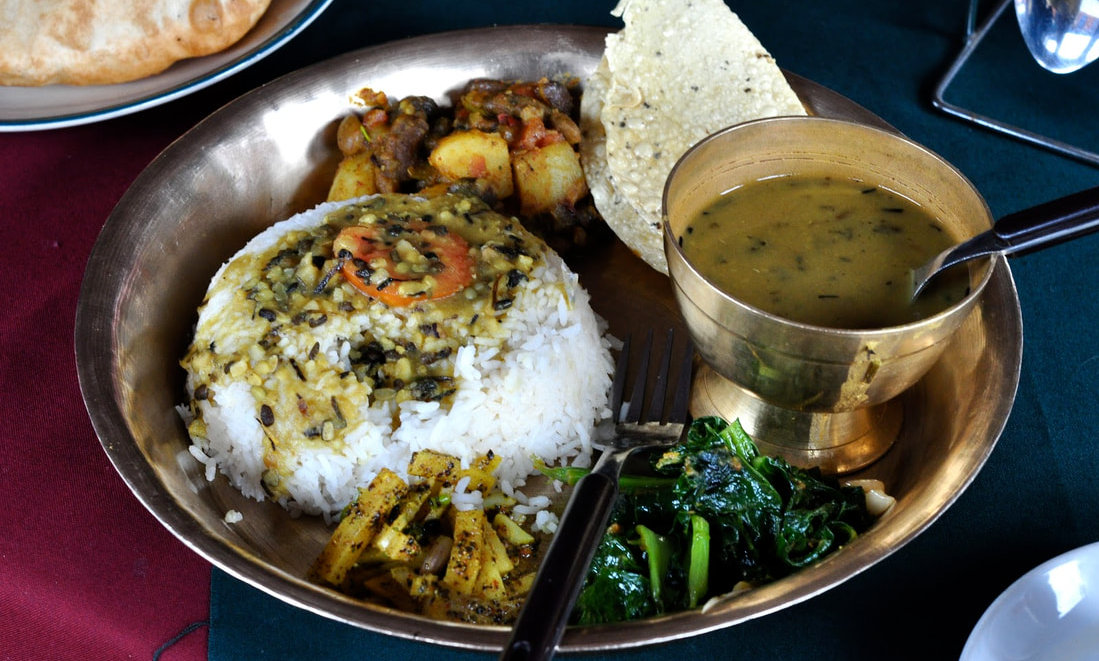
To accompany these main dishes, hot tea, and light snacks often grace the table. And for those wanting a bit of indulgence at the day's end, a beer might be on the cards, particularly at lower altitudes where the body is better equipped to metabolize alcohol.
Dining in the Himalayas isn't just about the act of eating. It's a holistic experience, catering not just to the body, but also to the soul. As trekkers sit down to eat, it's the collective sense of achievement, the shared stories, and the mountainous backdrop that truly elevate the meal. Whether you're indulging in a comforting Sherpa Stew or the energizing Dal Bhat, the Himalayan dinner is an experience in itself, setting the tone for the adventures of the next day.
Drink a lot of water during trekking
The majestic allure of the Gokyo Valley Trek beckons countless adventurers. But with great beauty comes challenges. One of the paramount concerns while trekking at high altitudes is hydration. Often understated, hydration plays an indispensable role in acclimatization and in ensuring a successful and enjoyable trekking experience.
The mantra is simple: “Eat more and drink more”. Here’s why:
-
High Altitude Hydration: The thinner air at higher elevations contains less oxygen, which can strain the respiratory system and increase the risk of altitude sickness. Ensuring your body is well-hydrated is key to combatting these challenges. A hydrated body facilitates efficient oxygen circulation, making it easier to breathe and acclimatize.
-
Minimum Daily Intake: Aim for a liquid intake of at least 4 liters every day. This doesn’t only mean water. Soups, teas, or even hot water with a slice of lemon can contribute to your hydration goals.
-
Water Sources on the Trek: The Himalayan trails of the Gokyo Valley are punctuated with taps offering water. However, it’s crucial to approach this water with caution. Not all sources are clean or safe for consumption. Trekkers can arm themselves with chlorine tablets or a pocket water filter. These are lightweight solutions that ensure you have safe drinking water throughout your trek. Alternatively, bottled mineral water is available for purchase. However, prices increase with altitude, ranging from Rs 100 in Lukla to Rs 250 in Gokyo village.
-
Pack Snacks: The trail can be unpredictable. While the landscapes are breathtaking, amenities like teahouses or shops might be sparse in certain stretches. It’s prudent to carry dry nuts, fruits, chocolates, or any other personal favorite snacks. Not only do they serve as an energy booster but they also ensure you're not left hungry in areas where amenities are scarce.
Trekking in the Gokyo Valley is an exhilarating experience. But it’s vital to prioritize your health and hydration. By being prepared and staying vigilant about your water intake, you ensure that your journey remains memorable for all the right reasons.
Best trip Notes: Proper guiding, food, drinking enough water, and taking good rest can easily take you to one of the world’s wandering trekking trails.
FAQs: Foods During the Gokyo Valley Trek
Q: What types of food can I expect during the Gokyo Valley Trek?
A: You can expect a mix of traditional Nepali meals, Sherpa cuisine, and various international dishes. Staple foods include Dal Bhat (lentil soup served with rice and vegetables), Momos (dumplings), Tsampa (roasted barley flour), Thukpa (noodle soup), along with options like pasta, pizza, and sandwiches in some teahouses.
Q: Are vegetarian or vegan options available during the trek?
A: Yes, vegetarian options are widely available, and most teahouses can accommodate vegan diets as well. However, it's a good idea to communicate your dietary preferences in advance to ensure variety and availability.
Q: Is it safe to drink the water during the trek?
A: It is advisable not to drink water directly from taps or streams. Bottled water is available for purchase, but to minimize environmental impact, consider using water purification tablets or a water filter. Many teahouses also offer boiled water which can be used to refill your bottles.
Q: How do the food prices vary as I ascend higher?
A: As you go higher up the trail, the price of food and beverages increases due to the added cost of transporting goods to these remote locations. Planning your budget accordingly is advisable.
Q: Can I find alcoholic beverages during the trek?
A: Alcoholic beverages are available at teahouses along the trek. However, it is generally recommended to avoid alcohol, especially at higher altitudes, as it can impede acclimatization and lead to dehydration.
Q: Will I have access to snacks during the trek?
A: Yes, you can purchase snacks like chocolate bars, biscuits, nuts, and dried fruits at local shops and teahouses along the trek. Carrying some with you is a good idea for energy boosts between meals.
Q: Are there any foods that help with altitude sickness?
A: While no specific foods prevent altitude sickness, maintaining hydration and eating a balanced diet can help. Some believe garlic soup has beneficial properties for acclimatization, and it is commonly available on the menu.
Q: Can I request custom meals if I don't like the options available?
A: Teahouses have set menus, and while they try to accommodate preferences, options might be limited, especially at higher altitudes. Communicating your likes and dislikes early on can help the staff prepare something that suits your taste whenever possible.
If you need any further information, please contact us by email: at [email protected], Phone: at +977- 985 100 5129 (WhatsApp)
#Tags
Tripadvisor
5.0910 reviewsGoogle
4.8110 reviewsFacebook
4.1 recommend44 ReviewsTrustpilot
4.1 Great(5 reviews)- Trusted by50K plus traveller




